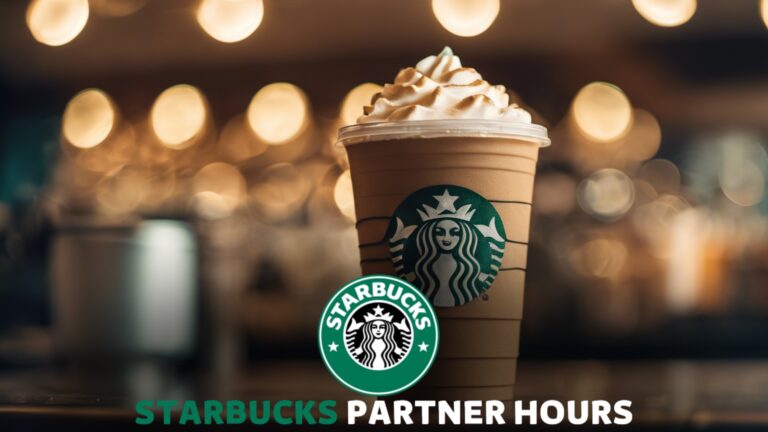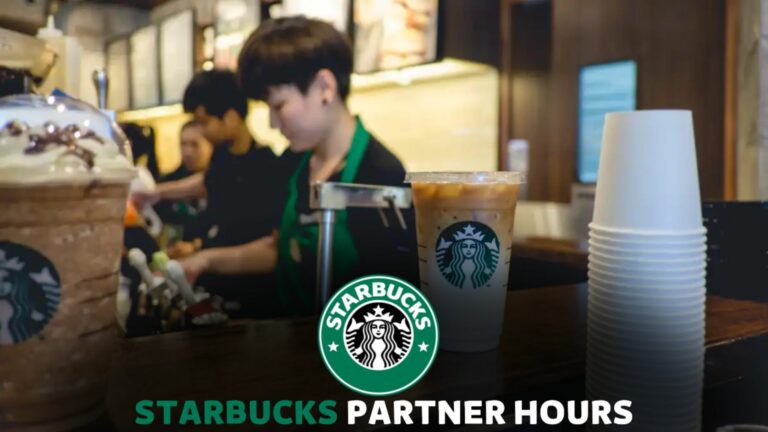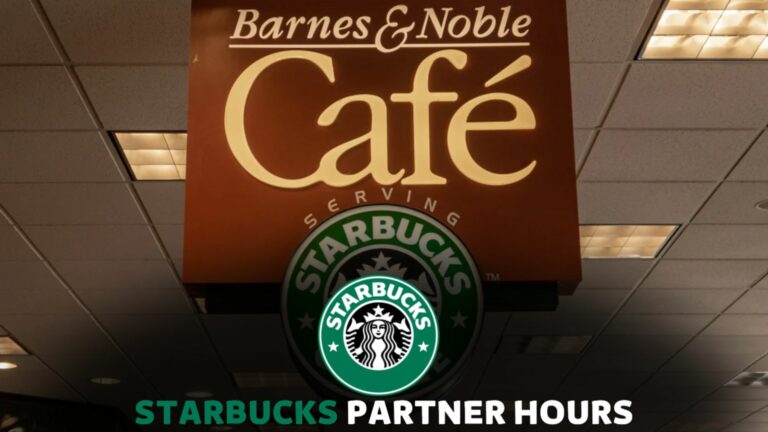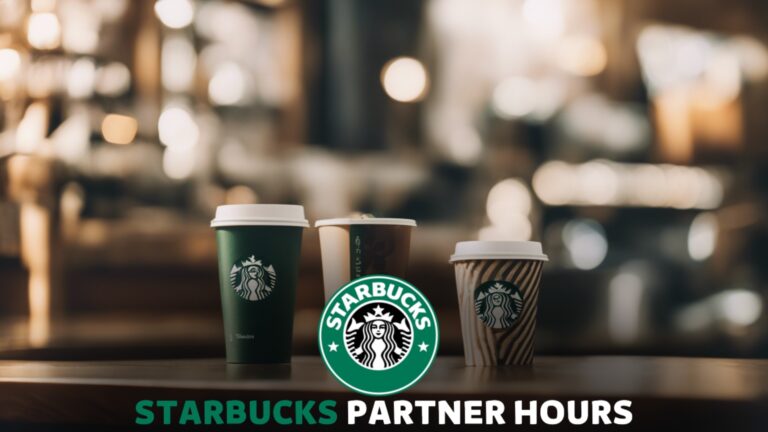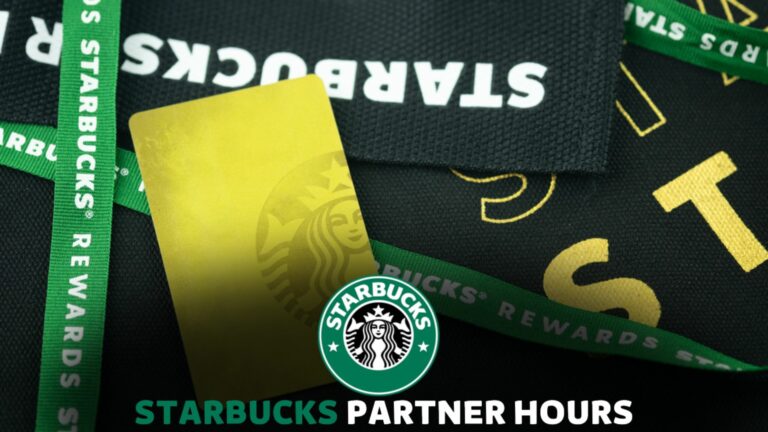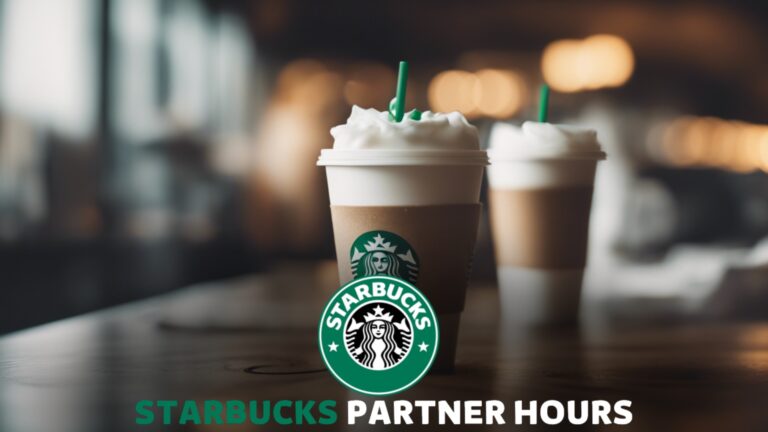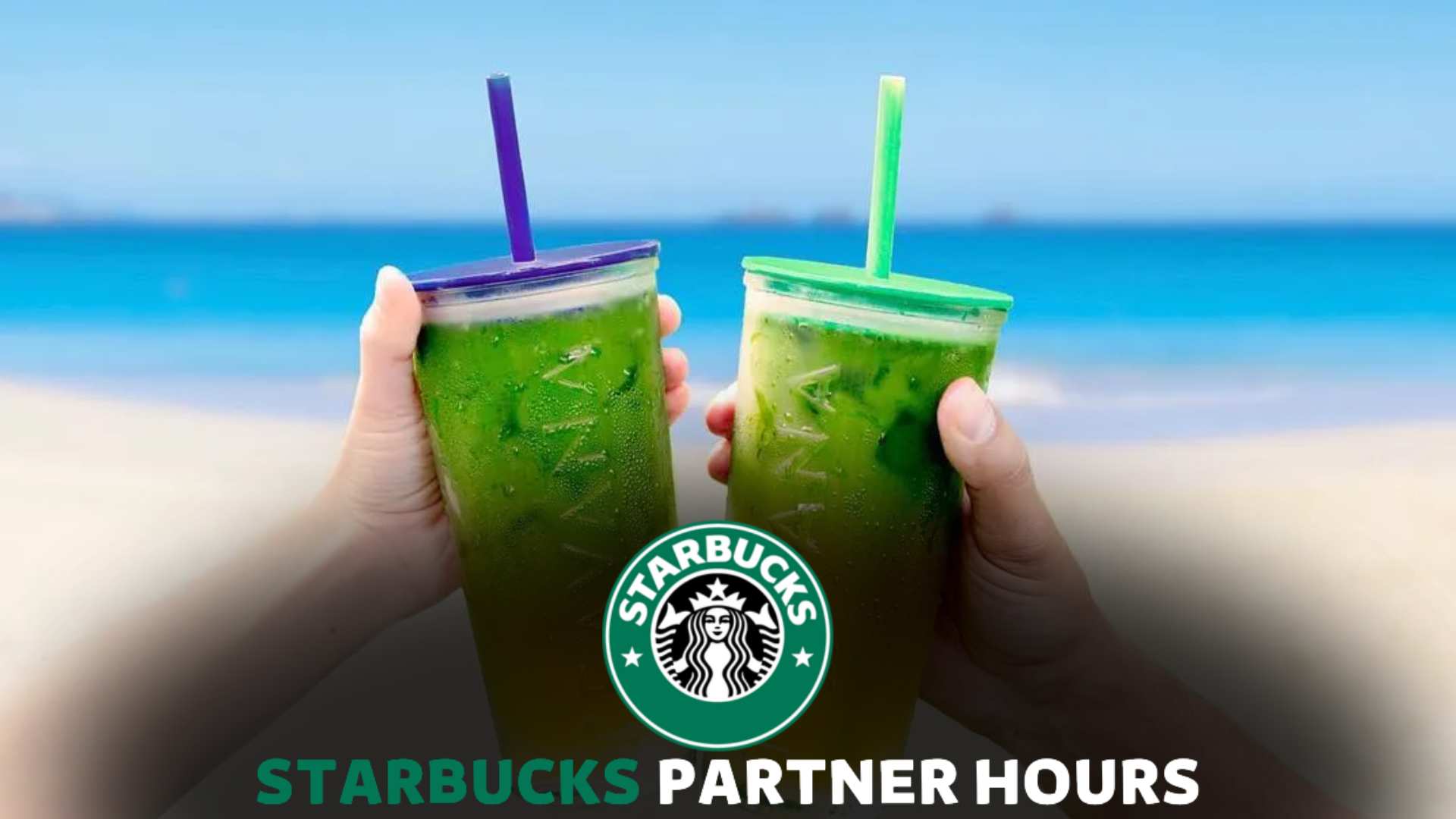
Summary
No, Starbucks has not tried to partner with Herbalife. Herbalife is a global nutrition company, while Starbucks focuses on the coffee industry.
Starbucks, the well-known coffeehouse chain, has always focused on providing high-quality coffee and beverages to its customers.
On the other hand, Herbalife is a renowned global nutrition company that focuses on providing nutrition products and supplements.
Therefore, Starbucks has made no attempts to collaborate or partner with Herbalife, as their expertise and product offerings are quite different.
While Starbucks continues to expand its reach in the coffee industry, Herbalife concentrates on promoting healthy nutrition and lifestyle.
Starbucks’ Attempt to Partner With Herbalife

Starbucks, widely known for its coffee and cozy atmosphere, once sought to partner with Herbalife, a global nutrition company. This unexpected collaboration stirred up curiosity and speculation among Starbucks and Herbalife enthusiasts.
Let’s delve into the background of these two renowned companies and explore the growth of Herbalife in the market.
Background of Starbucks and Herbalife
Starbucks:
- Founded in 1971, Starbucks has become one of the world’s most recognizable brands.
- Beginning as a single coffee shop in Seattle, it has expanded to over 31,000 stores worldwide.
- Starbucks is a pioneer in offering a wide range of coffee-based beverages and delicious pastries.
Herbalife:
- Established in 1980, Herbalife is a global nutrition company promoting a healthy lifestyle.
- Herbalife provides various products, including nutrition shakes, supplements, and weight-management programs.
- With over 40 years of experience, Herbalife has gained a solid reputation for its commitment to improving individual well-being.
The Growth of Herbalife in the Market
Expanding product range
- Herbalife started with a few nutritional products but has since diversified its portfolio.
- Additional offerings include skincare, energy drinks, and a sports nutrition line.
- This expansion has allowed Herbalife to cater to a broader customer base, attracting individuals with varying wellness goals.
Global presence:
- Herbalife’s success is not limited to a single market; it has expanded its reach worldwide.
- With a presence in over 90 countries, Herbalife has established a global network of customers and distributors.
- This extensive geographic coverage has contributed to the company’s remarkable growth and popularity on a global scale.
Commitment to quality:
- Herbalife prides itself on maintaining high product standards and adhering to strict quality control measures.
- Using scientifically backed research, Herbalife ensures their products provide the best support for their customers’ well-being.
- This commitment to quality has earned Herbalife the trust and loyalty of millions of individuals seeking optimal nutrition.
Intriguingly, Starbucks’ attempt to partner with Herbalife exemplifies their shared vision of promoting wellness and healthy living. While the partnership did not materialize, the growth of Herbalife in the market speaks volumes about the company’s dedication to empowering people worldwide.
As the world evolves, Starbucks and Herbalife continue to innovate and inspire, catering to their respective customer base’s diverse needs and aspirations.
Exploring the Synergies Between Starbucks and Herbalife

Starbucks and Herbalife are two well-known brands in the food and beverage industry. While Starbucks has established itself as a popular coffee chain, Herbalife specializes in nutrition and weight management products.
The idea of these two giants partnering up might seem intriguing to some, but did Starbucks try to partner with Herbalife?
Let’s dig deeper to understand the potential synergies between these two companies.
Shared Values and Customer Base
- Both Starbucks and Herbalife prioritize the well-being of their customers. They recognize the growing demand for healthier options and aim to provide products that support a healthy lifestyle.
- Starbucks focuses on sourcing ethically and sustainably grown coffee beans, while Herbalife emphasizes the importance of using high-quality ingredients. This shared commitment to quality and sustainability can be a strong foundation for collaboration.
- Both companies have a solid customer base that values wellness and self-care. Starbucks attracts a broad range of consumers who appreciate a good cup of coffee, while Herbalife targets individuals interested in improving their nutrition and overall wellness.
Potential Product Collaborations
- Starbucks could offer Herbalife’s nutrition and weight management products in their stores. This collaboration would provide Starbucks customers with a convenient option to access Herbalife’s products alongside their favorite beverages.
- Joint promotional campaigns and events could be organized to educate customers about the benefits of incorporating both Starbucks and Herbalife products into their daily routines. This collaboration would not only enhance the visibility of both brands but also attract new customers.
- Engaging in product development together could also be an exciting avenue for collaboration. Starbucks could utilize Herbalife’s expertise in nutrition to introduce healthier food and beverage options that align with their customers’ preferences.
While it is unclear if Starbucks has tried to partner with Herbalife, there are potential synergies between these two companies. Starbucks and Herbalife are committed to quality, sustainability, and customer wellness.
Collaborations in product offerings, promotions, and product development could provide new and exciting opportunities for both brands to meet their customers’ evolving needs.
The Challenges Faced By Starbucks and Herbalife
Conflicting Business Strategies
Starbucks, a renowned global coffee chain, and Herbalife, a famous wellness company, faced challenges in developing a viable partnership due to conflicting business strategies.
The two companies have different core focuses and target markets, making collaboration difficult. Let’s take a closer look at the challenges they encountered:
Starbucks:
- It built its brand around coffee, creating a comfortable space for customers to enjoy their beverages.
- Offers a wide range of coffee-based products, including brewed coffee, espresso-based drinks, and various snacks.
- Targets a broad consumer base, from coffee enthusiasts to casual consumers looking for a cozy ambiance.
Herbalife:
- Primarily concentrates on the wellness and nutrition industry.
- Offers a range of health-focused products, including supplements, meal replacements, and skincare items.
- Targets individuals interested in fitness, weight management, and general wellness.
Challenges:
- Misalignment of values: Starbucks’ focus on coffee and Herbalife’s focus on wellness create a clash in terms of brand positioning and purpose for partnership.
- Different consumer groups: Starbucks caters to a broader consumer base, while Herbalife targets health-conscious individuals, making it challenging to find common ground.
- Product integration: Finding a way to incorporate Herbalife’s wellness products into Starbucks’ menu without diluting the core coffee offerings proved a hurdle.
- Market competition: Both companies face competition from other brands, but their market positions are distinct, further complicating potential collaboration.
Legal and Regulatory Hurdles
In addition to conflicting business strategies, legal and regulatory hurdles posed another challenge for Starbucks and Herbalife.
Starbucks:
- Operates in multiple countries, each with its laws and regulations regarding partnerships and product offerings.
- Must navigate legal complexities to ensure compliance while exploring collaborative opportunities.
Herbalife:
- Operates in the wellness industry, subject to specific regulations and compliance requirements regarding product claims and safety.
- Must ensure that any partnership with Starbucks adheres to these regulations.
Challenges:
- Advertising and labeling: Starbucks and Herbalife must comply with advertising and labeling regulations specific to their respective industries.
- Intellectual property: Protecting intellectual property rights and ensuring that collaborative products or marketing campaigns do not infringe on trademarks can be complex.
- Product claims: Herbalife’s nutritional products are subject to scrutiny regarding health claims, requiring careful wording and evidence to support any promotional statements.
Conflicting business strategies and legal and regulatory hurdles presented significant challenges for Starbucks and Herbalife in pursuing a partnership.
The divergent target markets, product integration difficulties, and legal complexities made it challenging to find common ground.
Despite the obstacles, both companies continue to explore opportunities to expand their reach and provide value to consumers in their respective domains.
Assessing the Outcome of the Failed Partnership Attempt

Starbucks and Herbalife seemed like unlikely duos in the business world. Their failed attempt to partner together left many wondering about its repercussions and implications for both companies.
Let’s delve into the aftermath of the failed partnership and evaluate the financial implications for both Starbucks and Herbalife and the impact on consumer perception and brand reputation.
Financial Implications for Both Companies
- Financial loss: The failed partnership certainly had economic implications for Starbucks and Herbalife. It is estimated that Starbucks incurred a notable loss in terms of investment and potential revenue.
- Missed growth opportunities: With the partnership falling through, both companies missed out on potential growth opportunities and the chance to tap into new markets or customer segments.
- Investor sentiment: The failed partnership could have affected investor sentiment, decreasing interest and trust in Starbucks and Herbalife stocks.
- Costs of exploration: The exploration and negotiation process required substantial resources from both companies, including time, effort, and financial investment. These costs ultimately went unredeemed.
Consumer Perception and Brand Reputation
- Confusion and skepticism: The failed partnership attempt may have caused confusion and distrust among consumers, as it raised questions about the compatibility and intentions of both brands.
- Loss of credibility: Brands rely heavily on partnerships to enhance credibility and expand their offerings. The collapse of the alliance could have undermined the credibility of both Starbucks and Herbalife in the eyes of consumers.
- Perceived values misalignment: The association between Starbucks, known for its coffee and ambiance, and Herbalife, a company in the health and wellness industry, may have appeared contradictory to consumers. This misalignment could have affected brand perception.
- Damage control efforts: In the aftermath of the failed partnership, both Starbucks and Herbalife might have needed to invest in damage control strategies, such as public relations campaigns or marketing initiatives, to mitigate any negative perceptions or associations.
The failed partnership attempt between Starbucks and Herbalife had significant financial implications for both companies and influenced consumer perception and brand reputation. While the exact impact may vary, it is clear that exploring partnerships requires careful consideration to ensure compatibility and alignment of values.
Lessons Learned From the Starbucks and Herbalife Saga
The Starbucks and Herbalife saga was a fascinating case of attempted partnership that garnered much attention. Lessons can be learned from this failed collaboration, particularly regarding strategic alignment and the risks and rewards associated with such endeavors.
Importance of Strategic Alignment
Strategic alignment ensures that different entities’ goals, values, and objectives are harmonized mutually. In the Starbucks and Herbalife saga, it becomes evident that strategic alignment plays a critical role in determining the success or failure of a partnership.
Consider the following points:
- Shared vision: Collaborating entities must have a shared vision to achieve a common goal. Without this alignment, conflicts and misdirection can arise, leading to a breakdown in the partnership.
- Complementary strengths: Partnerships should be founded on complementing one another’s strengths. Starbucks and Herbalife may have failed to identify how their respective strengths could have been advantageous to both parties, resulting in a missed opportunity for a fruitful collaboration.
- Market compatibility: Partnering companies should thoroughly assess their market compatibility to evaluate whether their products or services complement each other. Understanding target demographics and customer preferences is crucial in determining synergies between partners.
The Risks and Rewards of Collaboration

Collaborations offer both risks and rewards. Businesses must weigh the potential benefits against the possible pitfalls before entering into partnerships. Consider the following aspects when evaluating the risks and rewards of collaboration:
- Opportunity for growth: Collaborations often provide access to new markets, customers, and resources that can stimulate business growth. However, partnerships can result in missed opportunities and wasted resources without proper due diligence.
- Shared risk: Collaborations allow for the sharing of risks, which can be advantageous in uncertain market conditions. However, misaligned risk appetite or inadequate risk management can lead to significant losses for both parties involved.
- Increased innovation: Partnering companies can pool their resources and expertise to drive innovation and create groundbreaking solutions. However, differences in innovation strategies or resistance to change can hinder realizing such benefits.
The Starbucks and Herbalife saga serves as a reminder of the importance of strategic alignment and the need to carefully evaluate the risks and rewards of collaboration.
By considering these factors, businesses can maximize the potential for successful partnerships and avoid the pitfalls encountered by these two iconic brands.
Can I Use My Partner Discount at Target Starbucks
You cannot use your partner discount at Target Starbucks.
Target stores are licensed Starbucks locations, meaning they are owned and operated by Target, not by Starbucks. Licensed Starbucks locations are not subject to the same partner discount and benefits as company-operated Starbucks stores.
However, you can use your partner discount at any company-operated Starbucks store in the United States. To use your partner discount, simply show your Partner Card to the barista when you order.
Conclusion
Considering all the evidence presented, it can be concluded that Starbucks did not try to partner with Herbalife on a large scale. Despite a few isolated incidents of joint marketing initiatives, such as the sale of Herbalife’s nutrition bars in specific Starbucks locations, there is no concrete evidence to suggest a formal partnership.
The widespread rumors and speculations surrounding this topic appear unfounded and lack substantial supporting facts. Be cautious when interpreting information online, as false claims can quickly spread and create confusion. As with any controversy, it is essential to analyze the available information and rely on credible sources critically.
In this case, the claims of a Starbucks-Herbalife partnership seem more of a myth than a reality.

